Results 4,231 to 4,240 of 12096
Thread: Anandtech News
-
08-22-14, 04:31 PM #4231
Anandtech: AMD Celebrates 30 Years of Gaming and Graphics Innovation
AMD sent us word that tomorrow they will be hosting a Livecast celebrating 30 years of graphics and gaming innovation. Thirty years is a long time, and certainly we have a lot of readers that weren't even around when AMD had its beginnings. Except we're not really talking about the foundation of AMD; they had their start in 1969. It appears this is more a celebration of their graphics division, formerly ATI, which was founded in… August, 1985.
AMD is apparently looking at a year-long celebration of the company formerly known as ATI, Radeon graphics, and gaming. While they're being a bit coy about the exact contents of the Livecast, we do know that there will be three game developers participating along with a live overclocking event. If we're lucky, maybe AMD even has a secret product announcement, but if so they haven't provided any details. And while we can now look forward to a year of celebrating AMD graphics and most likely a final end-of-the-year party come next August, why not start out with a brief look at where AMD/ATI started and where they are now?
I'm old enough that I may have been an owner of one of ATI's first products, as I began my addiction career as a technology enthusiast way back in the hoary days of the Commodore 64. While the C64 initially started shipping a few years earlier, Commodore was one of ATI's first customers and they were largely responsible for an infusion of money that kept ATI going in the early days.
Source: Wikimedia Evan-Amos
By 1987, ATI began moving into the world of PC graphics with their "Wonder" brand of chips and cards, starting with 8-bit PC/XT-based board supporting monochrome or 4-color CGA. Over the next several years ATI would move to EGA (640x350 and provided an astounding 16 colors) and VGA (16-bit ISA and 256 colors). If you wanted a state-of-the-art video card like the ATI VGA Wonder in 1998, you were looking at $500 for the 256K model or $700 for the 512K edition. But all of this is really old stuff; where things start to become interesting is in the early 90s with the launch and growing popularity of Windows 3.0.
ATI's Mach 8 was their first true graphics processor from the company. It was able to offload 2D graphics functions from the CPU and render them independently, and at the time it was one of the few video cards that could do this. Sporting 512K-1MB of memory, it was still an ISA card (or it was available in MCA if you happened to own an IBM PS/2).
Source: Wikimedia Misterzeropage
Two years later the Mach 32 came out, the first 32-bit capable chip with support for ISA, EISA, MCA, VLB, and PCI slots. Mach 32 shipped with either 1MB or 2MB DRAM/VRAM and added high-color (15-bit/16-bit) and later True Color (the 24-bit color that we're still mostly using today) to the mix, along with a 64-bit memory interface. And two years after came the Mach 64, which brought support for up to 8MB of DRAM, VRAM, or the new SGRAM. Later variants of the Mach 64 also started including 3D capabilities (and were rebranded as Rage, see below), and we're still not even in the "modern" era of graphics chips yet!
Next in line was the Rage series of graphics chips, and this was the first line of graphics chips built with 3D acceleration as one of the key features. We could talk about competing products from 3dfx, NVIDIA, Virge, S3, etc. here, but let's just stick with ATI. The Rage line appropriately began with the 3D Rage I in 1996, and it was mostly an enhancement of the Mach64 design with added on 3D support. The 3D Rage II was another Mach64 derived design, with up to twice the performance of the 3D Rage. The Rage II also found its way into some Macintosh systems, and while it was initially a PCI part, the Rage IIc later added AGP support.
That part was followed by the Rage Pro, which is when graphics chips first started handling geometry processing (circa 1998 with DirectX 6.0 if you're keeping track), and you could get the Pro cards with up to 16MB of memory. There were also low-cost variations of the Rage Pro in the Rage LT, LT Pro, and XL models, and the Rage XL may hold the distinction of being one of the longest-used graphics chips in history, as I know even in 2005 or thereabouts there were many servers still shipping with that chip on the motherboard providing graphics output. In 1998 ATI released the Rage 128 with AGP 2X support (the enhanced Rage 128 Pro added AGP 4X support among other things a year later), and up to 32MB RAM. The Rage 128 Ultra even supported 64MB in its top configuration, but that wasn't the crowning achievement of the Rage series. No, the biggest achievement for Rage was with the Rage Fury MAXX, ATI's first GPU to support alternate frame rendering to provide up to twice the performance.
And last but not least we finally enter the modern era of ATI/AMD video cards with the Radeon line. Things start to get pretty dense in terms of releases at this point, so we'll mostly gloss over things and just hit the highlights. The first iteration Radeon brought support for DirectX 7 features, the biggest being hardware support for transform and lighting calculations – basically a way of offloading additional geometry calculations. The second generation Radeon chips (sold under the Radeon 8000 and lower number 9000 models) added DirectX 8 support, the first appearance of programmable pixel and vertex shaders in GPUs.
Perhaps the best of the Radeon breed goes to the R300 line, with the Radeon 9600/9700/9800 series cards delivering DirectX 9.0 support and, more importantly, holding onto a clear performance lead over their chief competitor NVIDIA for nearly two solid years! It's a bit crazy to realize that we're now into our tenth (or eleventh, depending on how you want to count) generation of Radeon GPUs, and while the overall performance crown is often hotly debated, one thing is clear: games and graphics hardware wouldn't be where it is today without the input of AMD's graphics division!
That's a great way to finish things off, and tomorrow I suspect AMD will have much more to say on the subject of the changing landscape of computer graphics over the past 30 years. It's been a wild ride, and when I think back to the early days of computer games and then look at modern titles, it's pretty amazing. It's also interesting to note that people often complain about spending $200 or $300 on a reasonably high performance GPU, when the reality is that the top performing video cards have often cost several hundred dollars – I remember buying an early 1MB True Color card for $200 back in the day, and that was nowhere near the top of the line offering. The amount of compute performance we can now buy for under $500 is awesome, and I can only imagine what the advances of another 30 years will bring us. So, congratulations to AMD on 30 years of graphics innovation, and here's to 30 more years!
More...
-
08-22-14, 08:03 PM #4232
Anandtech: Apple Begins iPhone 5 Battery Replacement Program for Certain Defective De
Today Apple has started a replacement program for certain iPhone 5 devices experiencing significantly reduced battery life. The company is stating that the affected devices were sold between the months of September 2012 and January 2013. Users with devices purchased within that timeframe who are experiencing issues are advised to check their serial number with Apple's new support page to see if they are eligible for a free battery replacement. Apple is also offering refunds to users with affected devices who paid for a battery replacement prior to the service program being launched.
The replacement process for affected users will begin on August 22 in the United States and China, and on August 29 in the rest of the world. Apple recommends that users backup their iPhone to iTunes or iCloud and then wipe all user data prior to having their battery serviced. More information, as well as the service to check your device's serial number, can be found in the source link below.
More...
-
08-23-14, 05:00 AM #4233
Anandtech: Habey Releases MITX-6771, J1900 Thin Mini-ITX with Long Life Cycle Support
Habey’s main focus in the PC market is towards industrial computers, with Ganesh having reviewed the BIS-6590 and BIS-6922 fanless systems last year. Industrial oriented components by their nature require sufficient design for 24/7 operation, sometimes in niche environments. To that extent Habey has released the MITX-6771, a Bay Trail based thin mini-ITX motherboard equipped with the Celeron J1900 SoC for the main purpose of providing an drop-in upgrade path for Intel DN2800MT users in the embedded sector. This means that the connectivity/IO of this new motherboard is designed to match the DN2800MT, with Habey adding a couple of extra features.
Using the 10W J1900 (quad core, 2.42 GHz) and a sufficient heatsink allows Habey to continue its fanless range, but due to the thin mini-ITX standard, motherboard design starts to get creative. The motherboard supports two DDR3L SODIMM modules for up to 8 GB of DRAM, and storage comes via an mSATA slot and a SATA 3 Gbps port. The mini-PCIe slot supports SIM card adaptors (such as this one suggested by Habey) to be used with the onboard SIM reader, with a further PCIe 2.0 x1 slot for non-thin mini-ITX environments. Network connectivity is either via the SIM card or the Realtek NIC.
The board has VGA and HDMI video outputs on the rear IO, with an LVDS header next to the CPU heatsink. The four USB 2.0 ports on the rear are combined with a USB 2.0 header and a USB 3.0 header. There is also an LPT header, two COM headers and audio is provided by a Realtek ALC662. OEM options include ALC892 audio, an additional SATA port or a second gigabit Ethernet port (in exchange for two of the rear USB ports).
The main aim for this sort of product is digital signage, industrial automation, medical, connected appliances and point-of-sale type systems, although Habey is keen to point out that media streaming is also a focus. Despite the limited one-year warranty, Habey is offering a Long Life Cycle Support package, although we are currently enquiring as to what this entails.
Users might note the lack of an ATX power connector on board, namely because power is either derived from the DC-IN jack on the rear IO or a 2-pin ATX connector just behind the DC-In. Inside the box is a SATA to two-pin ATX cable.
Habey retails some of their products on Newegg rather than going through them direct, and the MITX-6771 comes in at $150. This is near double what the consumer motherboards cost, although there are no consumer motherboards with SIM card (and thus 3G/4G) functionality or are a direct drop-in for the DN2800MT, rear IO and all.
Source: Habey
Gallery: Habey Releases MITX-6771, J1900 Thin Mini-ITX with Long Life Cycle Support



More...
-
08-23-14, 06:31 PM #4234
Anandtech: AMD Announces Radeon R9 285, Shipping September 2nd
During their 30 years of graphics celebration, today AMD announced a forthcoming addition to the Radeon R9 200 graphics card lineup. Launching on September 2nd will be the company’s new midrange enthusiast card, the Radeon R9 285.
The R9 285 will take up an interesting position in AMD’s lineup, being something of a refresh of a refresh that spans all the way back to Tahiti (Radeon 7970). Spec wise it ends up being extremely close on paper to the R9 280 (née 7950B) and it’s telling that the R9 280 is no longer being advertised by AMD as a current member of their R9 lineup. However with a newer GPU under the hood the R9 285 stands to eclipse the 280 in features, and with sufficient efficiency gains we hope to see it eclipse 280 in performance too.
Looking at the raw specifications, the R9 285 is a 1792 stream processor Graphics Core Next product. Paired with these SPs are 112 texture units (in the standard 16:1 ratio), and on the backend of the rendering pipeline is 32 ROPs. As is unfortunately consistent for AMD, they are not disclosing the product’s base clockspeed, but they have published the boost clockspeed of 918MHz.AMD GPU Specification Comparison AMD Radeon R9 290 AMD Radeon R9 280X AMD Radeon R9 285 AMD Radeon R9 280 Stream Processors 2560 2048 1792 1792 Texture Units 160 128 112 112 ROPs 64 32 32 32 Core Clock 662MHz 850MHz ? 827MHz Boost Clock 947MHz 1000MHz 918MHz 933MHz Memory Clock 5GHz GDDR5 6GHz GDDR5 5.5GHz GDDR5 5GHz GDDR5 Memory Bus Width 384-bit 384-bit 256-bit 384-bit VRAM 4GB 3GB 2GB 3GB FP64 1/8 1/4 ? 1/4 TrueAudio Y N Y N Typical Board Power 250W 250W 190W 250W Manufacturing Process TSMC 28nm TSMC 28nm TSMC 28nm TSMC 28nm Architecture GCN 1.1 GCN 1.0 GCN 1.1? GCN 1.0 GPU Hawaii Tahiti Tonga? Tahiti Launch Date 11/05/14 10/11/13 09/02/14 03/04/14 Launch Price $399 $299 $249 $279
Meanwhile feeding R9 285’s GPU falls to the card’s 2GB of GDDR5. This is on a 256-bit bus, and is clocked at 5.5GHz for a total memory bandwidth of 176GB/sec.
The R9 285 will have a rated typical board power (AMD’s analogue for TDP) of 190W. Notably this is only 10W higher than the Pitcairn based R9 270X despite the 40% larger SP count, or alternatively is 60W lower than the Tahiti based R9 280. While we don’t have a ton of details on the GPU at this time, taking into consideration the R9 270X comparison in particular, it’s clear that AMD has done some work on efficiency to squeeze out more compared to the GCN 1.0 based Pitcairn and Tahiti parts that R9 285 is going to be placed between.
The GPU itself is based on a newer version of AMD’s architecture, at least GCN 1.1 based on the presence of TrueAudio support. AMD has not formally announced the underlying GPU at this time, but given the timing and the specifications we believe it’s based on the new Tonga GPU, which was first announced for the FirePro W7100 earlier this month. In any case we don’t have much in the way of details on Tonga at this time, though we expect AMD to flesh out those details ahead of R9 285’s September 2nd launch. The biggest question right now – besides whether this is a “full” Tonga configuration – is whether Tonga is based on GCN 1.1 or something newer.
Based on some prior AMD statements and information gleaned from AMD’s CodeXL tool, there is reason to suspect (but not confirm) that this is a newer generation design. AMD for their part has done something very similar in the past, launching GCN 1.1 back on the Radeon HD 7790, but essentially hiding access to and details of GCN 1.1’s feature set until the launch of the Hawaii based R9 290X later in the year. Whether AMD is doing this again remains to be seen, but it is something we have seen them do before and don’t doubt they could do again. Though whether they will confirm it is another matter, as the company does not like to publicly differentiate between GCN revisions, which is why even the GCN 1.1 name is unofficial.
Working for the moment off of the assumption that R9 285 is Tonga based and that it’s a GCN 1.1 part, we expect that performance should be a wash with the R9 280 while the R9 285 has an advantage on features. GCN 1.1 does have some mild performance optimizations to it that will give the R9 285 an edge, though it remains to be seen what the impact will be of the narrower memory bus. The fact that the Tahiti based R9 280X remains in AMD’s lineup indicates that if nothing else, it won’t match the performance of a full Tahiti configuration. Otherwise when it comes to features, being GCN 1.1 based means that the R9 285 will bring with it support for True Audio, support for bridgeless CrossFire thanks to the XDMA engine, GCN 1.1’s superior boost mechanism, and full support for AMD’s upcoming FreeSync implementation of DisplayPort Adaptive Sync (GCN 1.0 GPUs are not fully adaptive).
As for AMD, this offers the chance to refresh some of their oldest GCN 1.0 products with a more capable GPU while also cutting costs. While we don’t have die size numbers for Tonga, it is reasonable to expect that it is smaller due to the narrower memory bus along with the die size optimizations that we saw go into Hawaii last year, which means it will be cheaper to manufacture than Tahiti. This also brings down board costs, again due to the narrower memory bus and the lower TDP allows for simpler power delivery circuitry.
AMD will be positioning the R9 285 to compete with NVIDIA’s GeForce GTX 760, the company’s second-tier GK104 part. The GTX 760 performs roughly the same as the R9 280, so AMD need only not regress to maintain their competitiveness, though any performance lead they can squeeze out will be all for the better. The GTX 760 is frequently found at $239 – a hair under the R9 285’s launch price – so NVIDIA will hold a very slight edge on price assuming they don’t adjust prices further (the GTX 760 launched at $249 almost 14 months ago).
The R9 285 for its part will be launching at $249 on September 2nd. This will be a hard launch, and with AMD’s partners already posting product pages for their designs we suspect this will be a pure virtual (no reference card) launch. AMD also tells us that there will be both 2GB and 4GB cards; we’re going to have to see what the price premium is, as the suitability of 2GB enthusiast cards has been challenged by the presence of so much RAM on the current-generation consoles, which will have a knock-on effect on console-to-PC ports.
Though with the launch of the R9 285 and impending discontinuation of the R9 280, buyers looking at picking up an R9 285 in the near term will have to be on the looking for R9 280 on clearance sale. It’s already regularly found for $220 and lower, making it $30 cheaper than the R9 285 and possessing 3GB of VRAM to the R9 285’s 2GB. This will make the R9 280 a strong contender, at least until supplies run out.
Finally, coinciding with the launch of the R9 285 will be a refresh of AMD’s Never Settle bundles. The details on this are still murky at this time, but AMD is launching what they call the Never Settle Space Edition bundle, which will see Alien Isolation and Star Citizen as part of a bundle for all R9 series cards. The lack of clarity is whether this replaces the existing Never Settle Forever bundle in this case, or if these games are being added to the Never Settle Forever lineup in some fashion. AMD has said that current Silver and Gold voucher holders will be able to get the Space Edition bundle with their vouchers, which lends credit to the idea that these are new games in the NSF program rather than a different program entirely.Fall 2014 GPU Pricing Comparison AMD Price NVIDIA Radeon R9 290 $400 $310 GeForce GTX 770 Radeon R9 280X $280 Radeon R9 285 $250 $240 GeForce GTX 760 Radeon R9 280 $220 Radeon R9 270X $180 $160 GeForce GTX 660
Both Alien Isolation and Star Citizen are still-in-development games. Alien Isolation is a first person shooter and is expected in October of this year. Meanwhile the space sim Star Citizen does not yet have a release date, and as best as we can tell won’t actually be finished until late 2015 at the earliest. In which case the inclusion here is more about access to the ongoing beta, which is the first time we’ve seen beta access used as part of a bundle in this fashion.
More...
-
08-24-14, 06:47 AM #4235
Anandtech: A Month with the iPhone 5s: Impressions from an Android User
I must confess that the last time I used an iPhone was three or four years ago. While I’ve followed the hardware changes from generation to generation, I’ve never really been able to write about the iPhone or iOS in detail. While objective data is great to work with, a great deal of evaluation relies on subjective experience. To fix this gap in knowledge, I received an iPhone 5s. After a month, I’ve really come to have a much more nuanced view of how Android and iOS compare, along with how Apple’s iPhone compares to the rest of the smartphone market. To find out how it compares, read on for the full article.
More...
-
08-25-14, 05:32 AM #4236
Anandtech: Exclusive: ASRock’s X99 OC Formula Motherboard in Pictures
Another element to the current whirlwind of X99 motherboard shots being released, ASRock has now lifted the lid on its high end overclocking motherboard, the X99 OC Formula. Similar to other OC Formula motherboards, this model is designed by ASRock’s in-house overclocker former world #1 Nick Shih. With the yellow and black livery, ASRock is keen to promote its use of 12 power phases capable of supporting up to 1300W. While regular users will come nowhere near to 1300W, extreme overclockers have (with previous platforms) hit 500W-700W while using liquid nitrogen to push the processors. Given ASRock’s recent push for overclocking records, it makes sense to design a product that can compete. Alongside this feature, ASRock still wants to have a motherboard that regular end-users can use 24/7 with high-end overclocks.
Alongside the new socket, the motherboard will offer 8 DIMM slots and 10 SATA 6 Gbps ports. Instead of SATA Express it looks like there is two M.2 slots, one PCIe 2.0 x2 and one PCIe 3.0 x4, both supporting up to 110mm drives. Next to the Purity Sound 2 is a half-height mini-PCIe slot, suggesting that there may be a WiFi edition or users can add their own WiFi module. The PCIe slots should allow 4-way Crossfire and SLI, with a central PCIe slot (PCIe 2.0 x4?) that will allow an additional PCIe card for two-way setups.
For overclockers, the X99 OC Formula will have the superhydrophobic Conformal Coating similar to previous models that protects the components on the motherboard from moisture. On the top right of the motherboard are quick frequency change buttons along with voltage check points, a PCIe disable switch, an LN2 mode switch and a slow mode switch. On the rear panel is a ClearCMOS switch, and additional PCIe power is provided by a molex connector.
For regular home users, there are six fan headers, a Thunderbolt header (requires a Thunderbolt PCIe card), a COM header, two USB 2.0 headers, a TPM header and two USB 3.0 headers. There are 10 USB 3.0 ports total including the two headers, and the rear IO shows dual network ports. The connector on the right hand side under the SATA ports is for ASRock's relatively new SATA power feature that makes use of hot-plug functionality to hide drives not in use. I would imagine that the ASRock BIOS and Software are also receiving iterative updates, and the in-the-box contents for OC Formula models in the past have always been interesting. With X99 being an expensive platform by comparison to Z97, I hope that there can be something in there to tantalize everyone.
With all the X99 press shots floating around the media, along with DDR4 pricing going live for pre-orders, things are getting more and more exciting. No word if the ASRock X99 OC Formula will be available at launch, or the release pricing, but I am sure we will know in due course.
More...
-
08-25-14, 06:30 AM #4237
Anandtech: Zotac ZBOX EI750 Plus: A Feature-Rich Iris Pro mini-PC
Intel's Crystal Well parts (-R series) with integrated eDRAM have arguably been the most interesting products in the Haswell line-up. In the early stages, only Apple had access to these parts. However, since the beginning of 2014, we have seen other vendors roll out products based on the -R series processors. We have already covered the BRIX Pro (BXi7-4770R) in great detail. Today, we will take a look at what Zotac has conjured up with Crystal Well in the ZBOX EI750 Plus.
More...
-
08-25-14, 10:30 PM #4238
Anandtech: LG Reveals Details About the G3 Stylus Debuting at IFA
The IFA trade show is scheduled to take place a couple of weeks from now, but LG is already giving details about their upcoming LG G3 Stylus ahead of the event. The G3 Stylus joins the original G3, the G3 Beat, and the G Vista in LG's lineup of similarly named devices for 2014. LG is only releasing limited information but we've put together all the specifications that they have detailed in a chart below. LG will be displaying the device at IFA with more detailed information about its specifications and details about pricing.
As you can see, it's not the most comprehensive specification sheet. Based on the display resolution and amount of RAM and NAND, this looks to be a fairly mid-range device. The display resolution may be problematic at that screen size, as 960x540 at 5.5" amounts to a pixel density of only 200ppi. A smaller display may have been preferable for sharpness, but LG is likely trying to find a balance to maintain stylus usability,LG G3 Stylus SoC Unknown 1.3GHz Quad Core Memory and Storage 8GB NAND + MicroSD, 1GB RAM Display 5.5” 960x540 IPS LCD Dimensions 149.3 x 75.9 x 10.2mm, 163g Camera 13 MP Rear Facing, 1.2MP Front Facing Battery Removable 3000 mAh (11.4Whr) Network 3G Operating System Android 4.4.2 KitKat
The size and mass of the device are both slightly greater than the LG G3. Despite being the same display size and battery capacity, the price point and the addition of the stylus necessitates changes to the device's chassis.
The G3 Stylus will be launched in Brazil in September, with other countries in Africa, Asia, and the Middle East to follow afterward. Pricing is currently unknown, and LG gave no details about a possible US launch, but there will definitely be more information about the G3 Stylus at IFA.
More...
-
08-26-14, 06:30 AM #4239
Anandtech: OCZ ARC 100 (240GB) SSD Review
OCZ launched the Barefoot 3 platform and the Vector SSDs in late 2012, and with their new direction OCZ has been trying to change their image to become a premium manufacturer of high performance SSDs rather than a budget brand. The Vector remained as the only Barefoot 3 based product for months until OCZ introduced the Vertex 450, a not exactly cheap but more mainstream version of the Vector with a shorter three-year warranty. Now, almost two years after the introduction of the Barefoot 3, OCZ is back in the mainstream SSD game with the ARC 100. Read on to find out what has changed and how the ARC 100 performs.
More...
-
08-26-14, 07:36 AM #4240
Anandtech: AMD Set To Announce New FX Processors
During the 30 Years of Graphics & Gaming Innovation celebration on the weekend, AMD took the opportunity to announce several new models of FX Processors that will be coming to market soon. The new models announced are the FX-8320E, the FX-8370, and the FX-8370E. The E at the end represents a lower TDP than the normal model.
As this was not a true product launch, details were light, but based on previous releases of the FX processors we should be able to make some assumptions. The turbo clock speed was announced as 4.0 GHz for the FX-8230E which is the same as the older FX-8320 which is 3.5 GHz as a base, so we can assume the base clock will be 3.5 GHz. The FX-8370 and FX-8370E are new to the product lineup however, with an announced boost speed of 4.3 GHz for both. No base clock speed was revealed for these processors though, but the previously announced FX-8350 comes in at a base of 4.0 GHz, so the higher model number should be slightly higher than that.
The E designation is slightly interesting. As a tradeoff for a lower TDP of 95 watts versus the 125 watts of the standard CPU, only the amount of boost time is affected. Base and boost clocks are the exactly the same as non-E chips.AMD FX CPU Comparison FX-
8320FX-
8320EFX-
8350FX-
8370FX-
8370EFX-
9590Release Date October 2012 August 2014 October 2012 August 2014 August 2014 June 2013 Modules 4 L1 Cache (Code) 256 KB L1 Cache (Data) 128 KB L2 Cache 8 MB L3 Cache 8 MB TDP 125 W 95 W 125 W 125 W 95 W 220 W Base Frequency (MHz) 3500 3500 (est) 4000 4000+ (est) 4000+ (est) 4700 Turbo Frequency (MHz) 4000 4000 4200 4300 4300 5000 Core Name Vishera Microarchitecture Piledriver Socket AM3+ Memory Support DDR3-1866
The final announcements on the FX side of the presentation were to do with pricing. The FX-9590 will see a “significant” price cut this month, and AMD will now offer CPUs in a six-pack bundle to offer a lesser price per chip when bought in a relatively small volume. Whether the price cut of the FX-9590 affects the rest of the lineup is unclear, but we should know more soon.
Source:
AMD 30 Live
More...
Thread Information
Users Browsing this Thread
There are currently 20 users browsing this thread. (0 members and 20 guests)




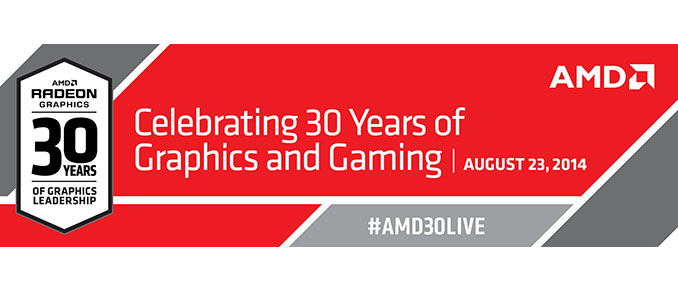

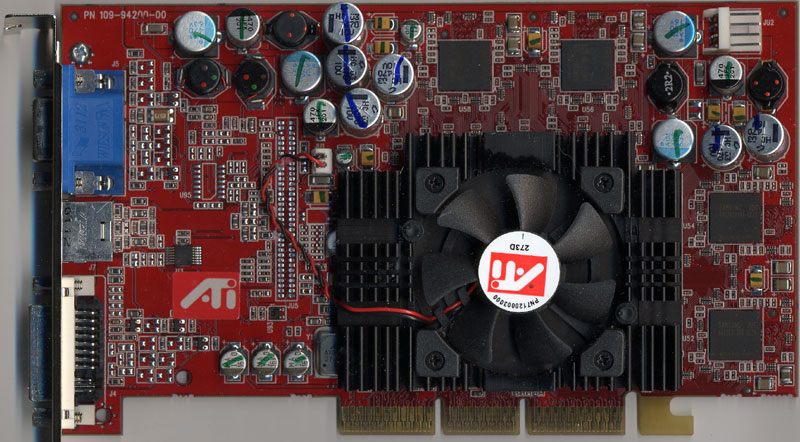


 Quote
Quote
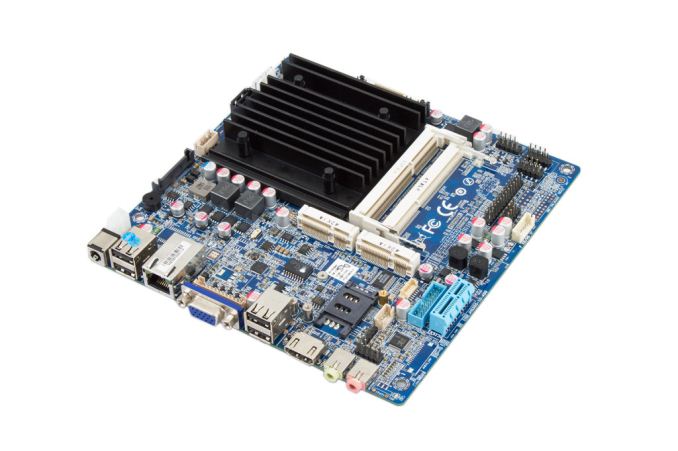



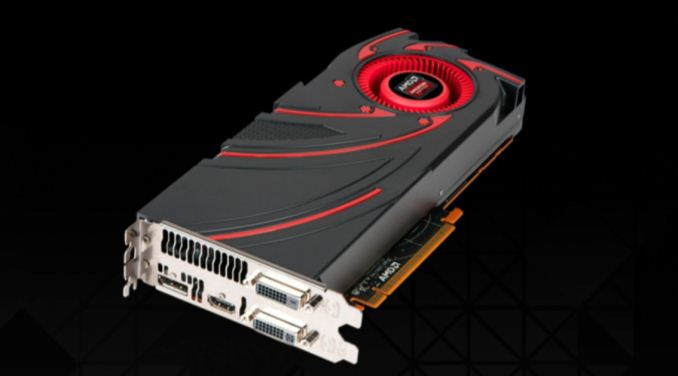
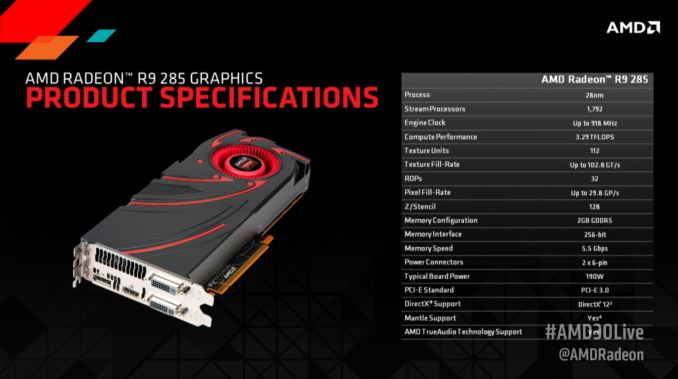
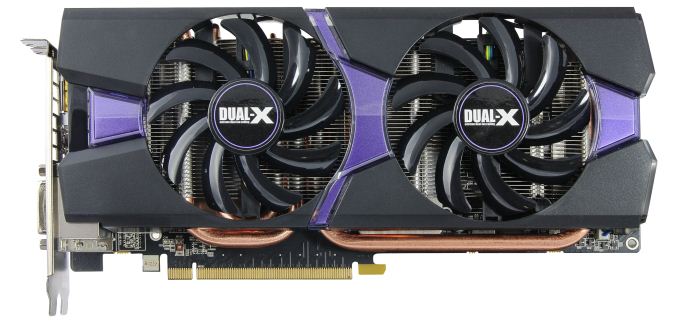
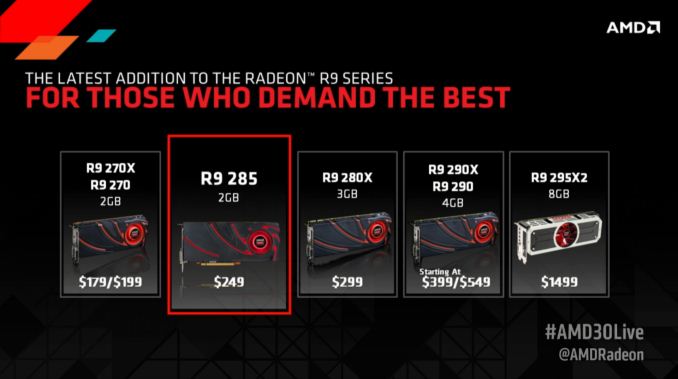
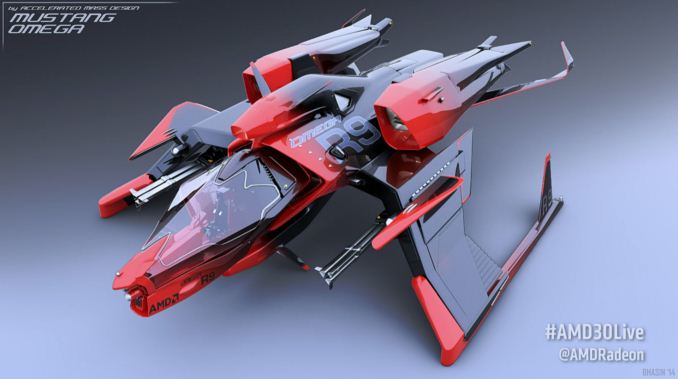
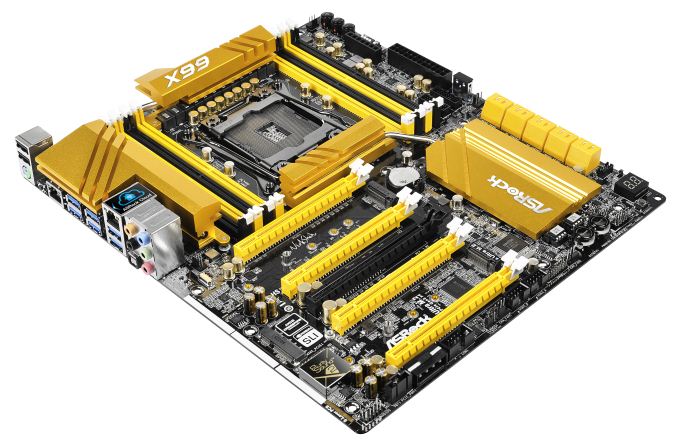
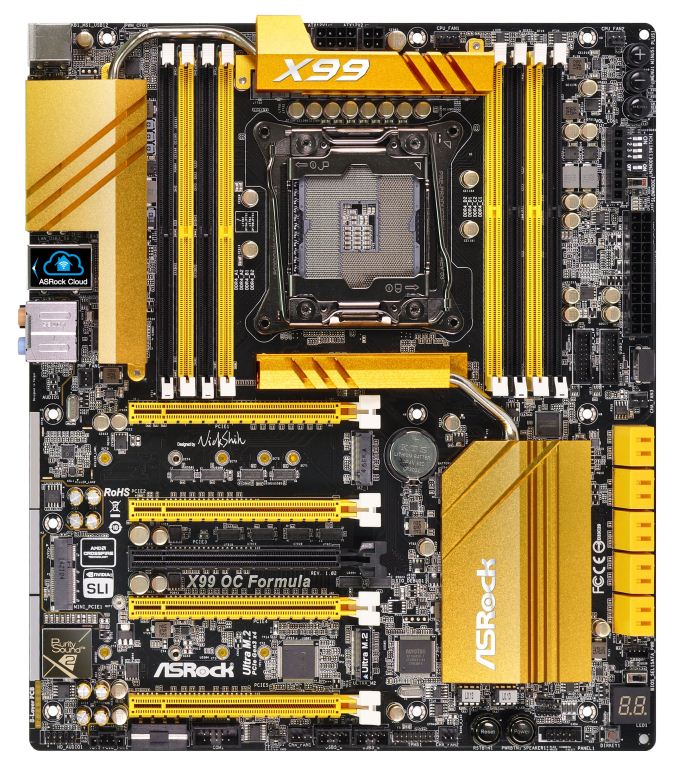
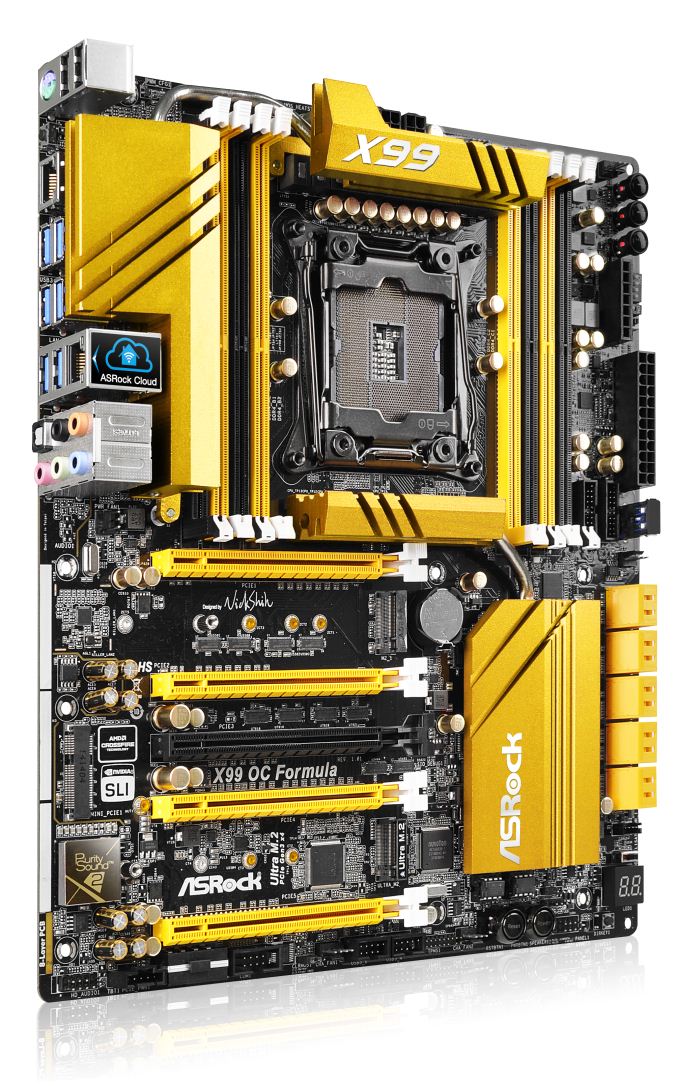



















Bookmarks